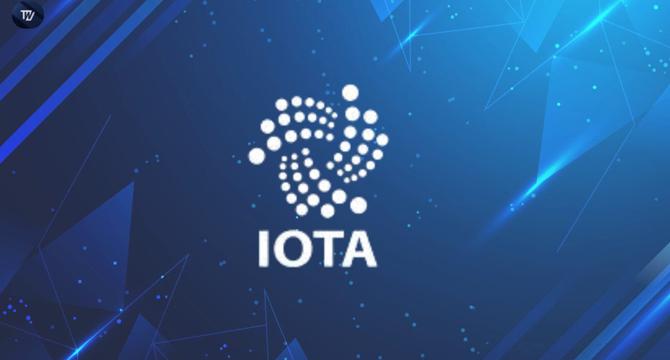Software News
Medium
176
Image Credit: Medium
JavaScript memory management
- JavaScript memory leaks can cause web apps to slow down, act weird, or crash over time.
- JavaScript is a garbage-collected language that automatically frees up memory not in use through the garbage collector.
- Memory leaks occur when memory that should be cleaned up is still being held onto by the code, leading to performance issues.
- These forgotten bits of memory accumulate over time and can significantly impact the app's performance.
Read Full Article
10 Likes
Sdtimes
96

Twilio Unveils Next-Generation Customer Engagement Platform Built for an AI and Data-Powered World at SIGNAL 2025
- Twilio unveiled its next-generation customer engagement platform at SIGNAL 2025, designed for seamless engagement in an AI- and data-powered world.
- The platform includes enhanced Customer Data Platform (CDP) capabilities, conversational AI tools, trusted communications channels, and intelligent compliance solutions.
- Twilio aims to deliver amazing digital interactions between businesses and consumers with a focus on AI, data, and communication channels.
- The platform will offer omnichannel communications, authentication, automation, predictive insights, and a unified profile API incorporating contextual Segment CDP data.
- Twilio's conversational AI updates include ConversationRelay and Conversational Intelligence tools for voice calls and text-based conversations.
- Plans to introduce RCS, WhatsApp Business Calling, and Compliance Toolkit aim to enhance trust and compliance across communication channels.
- Data residency features for Email and SMS in the EU are planned for General Availability and Beta, respectively.
- Twilio's Segment CDP introduces Event-Triggered Journeys, rich contextual payloads, observability, and scalability improvements for real-time personalization.
- New integrations with partners like Amplitude and Attribution App will enhance Twilio's Segment CDP offerings.
- Twilio's platform focuses on building better customer experiences through AI, data-powered engagement, trusted communications, and personalized insights.
Read Full Article
5 Likes
Idownloadblog
273

Image Credit: Idownloadblog
How and when to use the different selection tools in Adobe Photoshop
- Adobe Photoshop offers various selection tools to precisely select specific parts of images for editing purposes.
- Selection tools help with isolating subjects, removing unwanted elements, and making precise edits.
- Tools like Select All, Marquee Selection, Lasso, and Quick Selection offer different ways to make selections.
- The Select All tool is used to select the entire image frame for global edits.
- Marquee Selection Tool allows for selecting rectangular or elliptical areas, making it suitable for basic shapes.
- Lasso Selection Tool offers freehand selection options for more precise selections beyond basic shapes.
- Quick Selection Tool provides intelligent selection options for quicker and more accurate selections based on image content.
- Tips include using keyboard shortcuts for precise selections, adding to or subtracting from selections, and adjusting tolerances.
- Mastering selection tools in Photoshop enhances editing efficiency and creative output.
- Utilizing tools like Marquee, Lasso, and Quick Selection can streamline the image editing process.
Read Full Article
16 Likes
Webkul
127

Image Credit: Webkul
WooCommerce Fashion Ethereal Theme
- WooCommerce Fashion Ethereal Theme is a premium design enhancing e-commerce stores with customization.
- Features of the theme include Gutenberg Page Builder support and customizable design options.
- It offers seamless integration with WooCommerce, providing a balance of design and functionality.
- Installation process involves uploading the ZIP file and activating the theme from WordPress dashboard.
- Data import methods, WooCommerce installation, and configuration details are provided for setup.
- Enhancing the theme with plugins like WooCommerce Plugin and WCBoost can optimize site functionality.
- Components like Mega Menu, Product Slider, and Static Page are detailed for user interface enhancements.
- Configuration options for banners, product grids, payment gateways, and social icons are explained.
- Instructions on setting up various sections like Promotional Icons, Wishlist, and Product Reviews are included.
- General settings for password strength, reviews display, and pagination options are outlined.
Read Full Article
7 Likes
Discover more
- Programming News
- Web Design
- Devops News
- Open Source News
- Databases
- Cloud News
- Product Management News
- Operating Systems News
- Agile Methodology News
- Computer Engineering
- Startup News
- Cryptocurrency News
- Technology News
- Blockchain News
- Data Science News
- AR News
- Apple News
- Cyber Security News
- Leadership News
- Gaming News
- Automobiles News
CSS-Tricks
154

Image Credit: CSS-Tricks
This Isn’t Supposed to Happen: Troubleshooting the Impossible
- The author encountered issues with JavaScript code not working on the server after uploading a rebuilt portfolio.
- Differences in behavior between servers led to missing elements like stars, game enemies, and cars on the website.
- Despite console errors and troubleshooting efforts, the code that worked locally failed to execute on the server.
- Attempts to resolve the issue through web host support and ChatGPT suggestions proved unsuccessful.
- The author discovered a discrepancy in SVG namespace URLs caused by an optimization plugin on the hosting service.
- Disabling the plugin corrected the code behavior, enabling successful website functionality.
- The article shares a humorous account of troubleshooting a challenging and unexpected technical issue.
- The experience highlights the importance of understanding server configurations and external influences on code execution.
- The author invites readers to share their own troubleshooting experiences and impossible problems in the comments.
- The journey showcases the persistence and resilience required in debugging complex web development issues.
Read Full Article
9 Likes
Hackaday
286

Image Credit: Hackaday
Version Control to the Max
- Version control has evolved over the years, with tools like Git making it easier for developers to manage different versions of their projects.
- In the early 1980s, version control was not as sophisticated, with developers manually managing EPROM versions for firmware updates.
- Implementing meta version control today involves not only managing code versions but also versioning development environments to ensure future compatibility.
- Virtualization of development environments is recommended for better project management and long-term accessibility, ensuring code can still be run in the future.
Read Full Article
17 Likes
Dev
392

Image Credit: Dev
How Crypto Billionaires Spend: Signals of Power, Branding, and Strategy
- Wealth in crypto circles is being spent in unconventional and symbolic ways to shape influence, personal brands, and narratives in the tech and Web3 ecosystems.
- Crypto billionaires follow strategic archetypes like the Minimalist Builder, Public-Facing Strategist, and Showman Investor for wealth allocation.
- Examples of unconventional spending include a treasure hunt with $2 million prizes, private financing of a $55 million SpaceX mission, and staged art performances by prominent figures like Justin Sun.
- Strategic spending choices in crypto not only reflect economic decisions but also serve to create brand identity, cultural impact, and global positioning for individuals within the industry.
Read Full Article
23 Likes
Medium
136

What Does an ai software developer Really Do? A Complete Guide for 2025
- An AI software developer is responsible for designing, developing, testing, and deploying AI-based systems and solutions using data and machine learning algorithms.
- They work on applications involving NLP, computer vision, predictive analytics, recommendation systems, chatbots, robotics, and more, requiring a mix of programming, statistical, and domain-specific knowledge.
- AI software developers differ from data scientists, with the former building AI systems while the latter designs them.
- The demand for AI software developers is growing across various industries, with starting salaries ranging from $80,000 to $120,000 in the U.S. and seasoned professionals earning upwards of $180,000 per year.
Read Full Article
8 Likes
Cinema5D
220

Image Credit: Cinema5D
Eddie AI Extension for DaVinci Resolve Released -Virtual Editing Assistant
- Eddie AI extension has been released for DaVinci Resolve, offering features like logging footage, assembling rough cuts, and responding to conversational prompts.
- The AI-powered assistant operates as a virtual editing assistant within Resolve without requiring users to switch applications.
- The extension comes with a free plan allowing two full project exports per month, along with Plus and Pro paid plans offering additional features like A/B roll logging and multicam podcast editing.
- Users can access the Eddie AI extension via the app for macOS and Windows, priced at $25/month for Plus and $100/month for Pro, with various capabilities and support for video editing modes.
Read Full Article
13 Likes
Pcgamer
233

Image Credit: Pcgamer
Windows 10 version of Microsoft 365 apps will be supported until 2028—but this isn't the Microsoft u-turn you may think it is
- Microsoft will continue to support the Windows 10 versions of Microsoft 365 apps with security updates until October 10, 2028.
- Contrary to earlier beliefs, Microsoft is not backpedaling from its support deadlines for Windows 10 apps as stated in a now-deleted blog post.
- The misleading blog post was not an official announcement and was removed the same day; Microsoft clarifies that information was inaccurate.
- While Microsoft advises upgrading to Windows 11 if issues arise, options like extended security updates for individual consumers and third-party security patches are available for Windows 10 users.
Read Full Article
14 Likes
Scand
79

How to Build a Private LLM: A Complete Guide
- Private LLM models offer businesses control, security, and customization for their AI needs, avoiding risks associated with public APIs.
- These models find applications in industries like Fintech, healthcare, and internal corporate chatbots, ensuring data security and compliance.
- Companies opt for private LLMs to comply with regulations, protect intellectual property, handle specialized tasks, and work with unique data.
- Choosing between open-source and proprietary models depends on factors like flexibility, data control, costs, and regulatory compliance.
- Building a private LLM involves steps like dataset preparation, infrastructure setup, model training, fine-tuning, deployment, and integration.
- High computing requirements, legal considerations, and ensuring the quality and interpretability of the model are key challenges in LLM implementation.
- Partnering with an LLM development company like SCAND can provide expert guidance, proven approaches, risk mitigation, and tailored solutions for businesses.
Read Full Article
4 Likes
Sdtimes
216

Image Credit: Sdtimes
CodeRabbit brings AI-powered code review into Visual Studio Code
- AI-powered code review is becoming essential as AI can write code faster than humans, necessitating faster code review processes.
- CodeRabbit, an AI code review provider, has integrated its solution into Visual Studio Code editor, along with Cursor code editor and Windsurf AI coding assistant.
- CodeRabbit aims to augment human code review processes using AI models like GPT 3.5, reducing cycle times and improving code review feedback.
- CodeRabbit's solution offers contextual AI code review capabilities by analyzing code dependencies, applying learning models to repositories, and incorporating dynamic data from external sources.
Read Full Article
12 Likes
Codecondo
233

Image Credit: Codecondo
Does Web Hosting Affect Website Performance?
- Web hosting plays a crucial role in website performance as it influences factors like page load time, uptime, and server response rate.
- Hosting hardware type, such as Solid State Drives (SSDs), RAM, and available bandwidth directly impact website speed and processing.
- Uptime, the time your website is live and accessible to users, is essential for traffic, credibility, and SEO rankings, with most providers offering 99.9% uptime guarantees.
- Selecting a secure hosting provider offering features like firewalls, SSL certificates, and real-time threat detection is crucial in protecting websites from cyberattacks and ensuring trustworthiness.
Read Full Article
14 Likes
TronWeekly
198

Image Credit: TronWeekly
IOTA’s Innovation Push: New Projects Target Digital Identity, Sustainability & Product Trust
- IOTA's Business Innovation Program is funding three startups working on digital identity, sustainability, and product traceability solutions.
- Startups Impierce, Orobo, and SDV Consulting are leveraging IOTA's technology for their projects.
- The startups chose IOTA for its scalable, privacy-first, and interoperable technology designed for global compliance.
- These projects aim to transform digital identity, supply chains, and product verification processes with the support of IOTA's Business Innovation Program.
Read Full Article
11 Likes
Educba
400

Image Credit: Educba
Extract and Copy Text from photos
- Visual content is crucial, with images being 94% more likely to be noticed than plain text.
- Extracting text from images can be challenging, especially with blurry or handwritten content.
- Effective methods to extract text from photos include Image to Text Converter, Google Drive & Docs, and Google Lens.
- Image to Text Converter uses OCR technology to extract text from images accurately, even from blurry photos.
- Google Drive can extract and copy text from photos but only processes one photo at a time.
- Google Lens, initially for smartphones, can now be used via web browsers to copy text from photos.
- Comparing the methods, Image to Text Converter offers batch processing and better accuracy for blurry or handwritten text.
- Choose the extraction method based on your needs, whether it's batch processing or handling single images.
- From AI Image-to-Video Generators to tools like Image to Prompt, explore various options for image text extraction.
- Tools like Google Drive, Google Lens, and Image to Text Converters provide simple solutions to extract text from photos efficiently.
Read Full Article
24 Likes
For uninterrupted reading, download the app